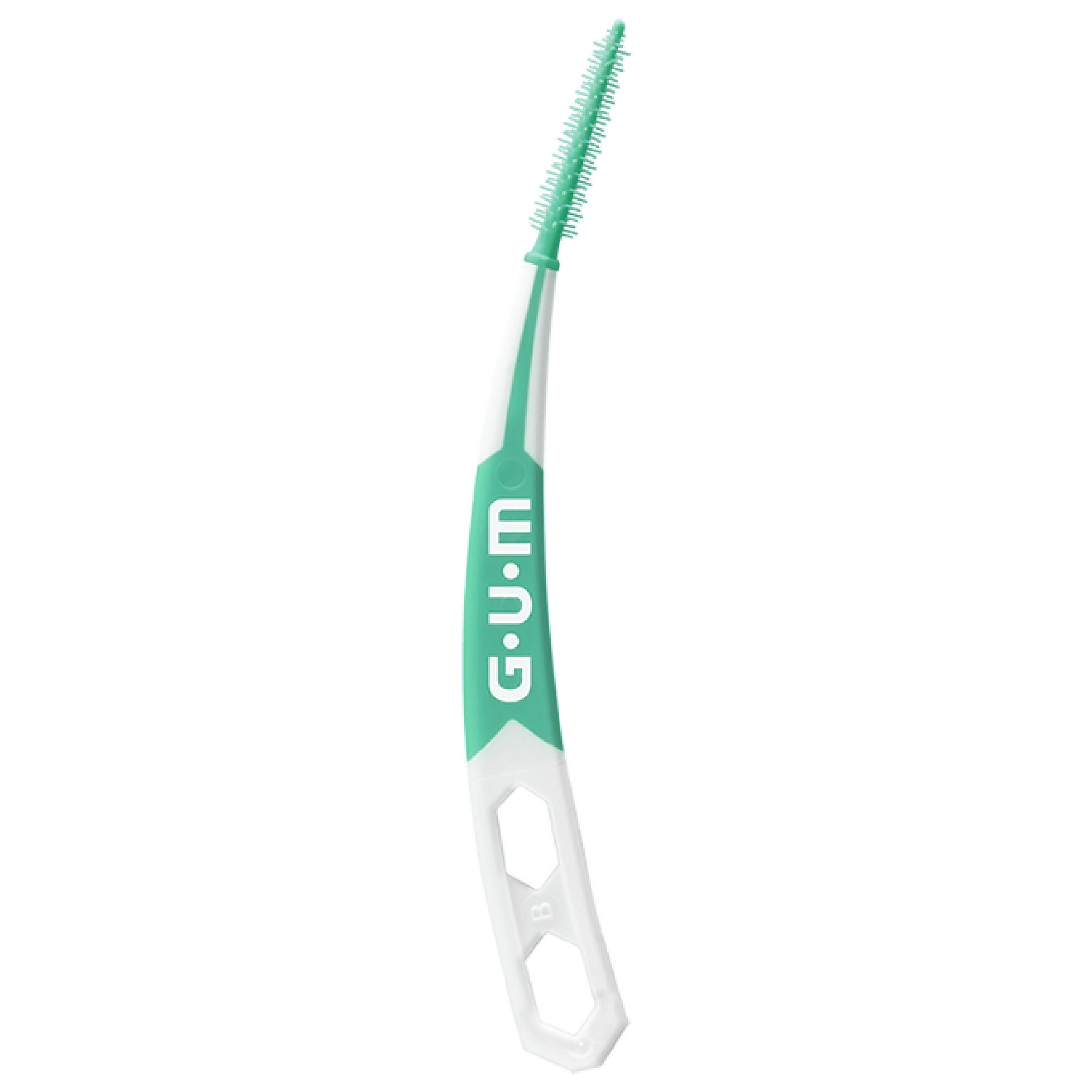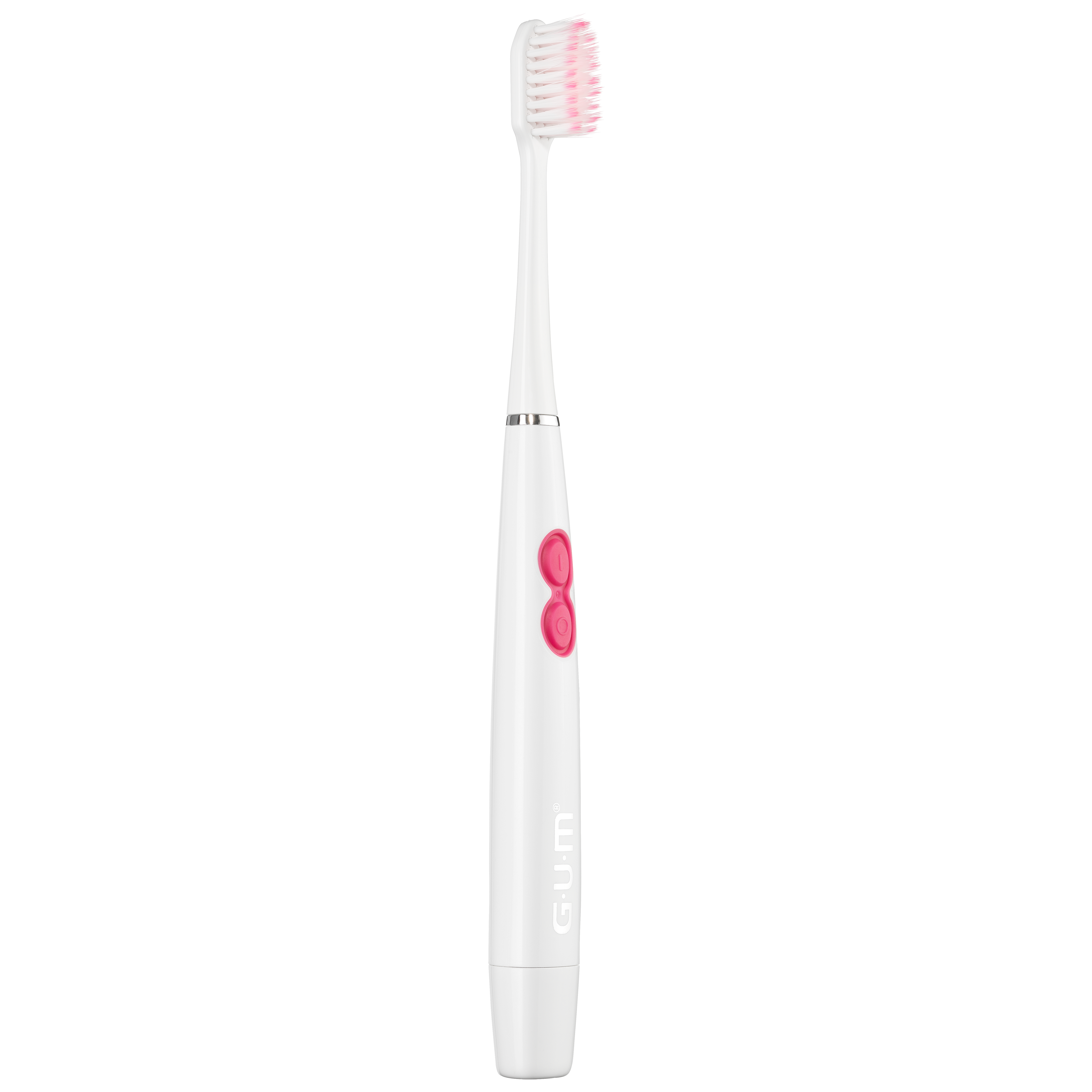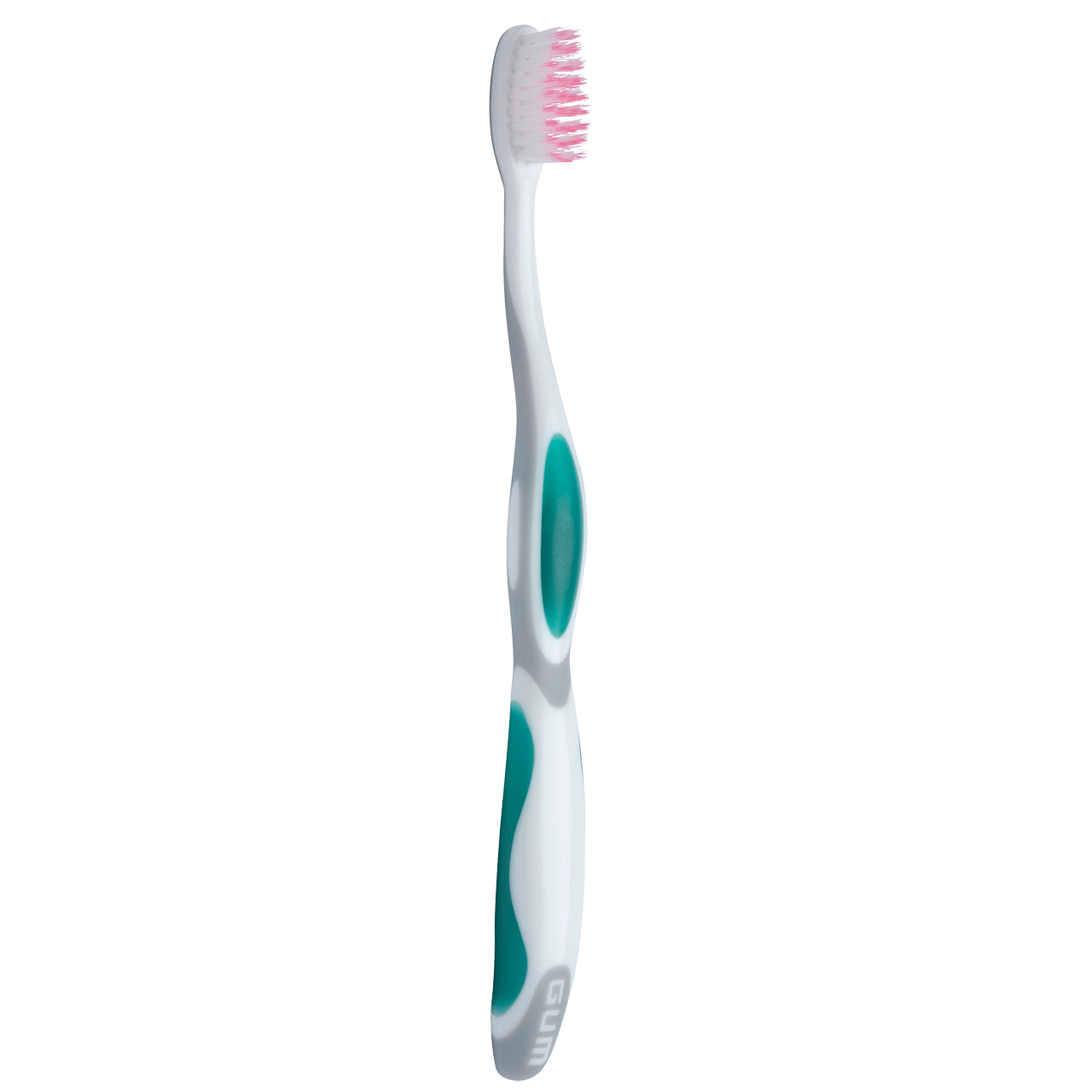
My Personalised Ritual: Sensitive Care
The following ritual includes the steps to follow and products to use to ensure complete daily oral care that meets your unique needs:
- GUM PRO SENSITIVE Manual Toothbrush offers ultra-soft bristles with thin tips that are gentle on sensitive teeth and gums for daily deep cleaning.
- GUM SensiVital Manual Toothbrush is designed with ultra-soft bristles for extra gentle cleaning of teeth and gums to safeguard your sensitive teeth.
Explore our alternative products
Everything you need to know
Tooth sensitivity, also known as dental hypersensitivity, occurs when the inner layer of the teeth, known as dentin, becomes exposed. This can happen due to several factors, including gum recession and enamel loss.
Gums can recede due to oral health issues such as plaque buildup and gingivitis, poor brushing habits, and natural ageing, exposing the tooth roots which lack enamel protection.
Enamel, the hard outer layer of the teeth, can wear away due to acidic foods and drinks, brushing too hard, and natural ageing, exposing the dentin which contains tubules that transmit sensations to the nerves.
Tooth sensitivity does not necessarily indicate an infection or disease.
However, if sensitivity develops suddenly or worsens over time, it could indicate more serious issues such as cavities, cracked teeth, pulpal nerve damage, or infection, necessitating a visit to the dentist.
Tooth sensitivity can also be a consequence of receding gums, hence exposed tooth roots, due to gum disease.
Sensitive teeth often result from exposed dentin due to enamel wear or receding gums. We recommend seeing your dentist regularly for professional treatments and advice on managing sensitivity.
At home, it is important to practise interdental cleaning daily to remove plaque and food particles between your teeth. This helps prevent gum diseases, gum recession, and caries, which can also cause or worsen sensitivity.
Follow this with brushing, using a soft-bristled toothbrush and desensitising toothpaste with low abrasivity to protect enamel and reduce pain. Be gentle with each stage of your daily care ritual to avoid damaging your gums and enamel.
It is also wise to limit acidic and sugary foods and drinks to prevent further enamel wear.
Your gums act as a protective barrier against infections, meaning anything that impacts their health can affect your entire body.
Research has connected gum disease to more than 50 systemic diseases, including serious conditions such as diabetes and cardiovascular diseases.
Following a complete daily oral care ritual of diligently cleaning along the gum line and between your teeth can eliminate and prevent plaque buildup.
Many things can impact your oral health, from habits to age to medical conditions and medications. That’s why it’s important to be aware of the early indicators that something may be wrong.
These early indicators include:
- Bleeding while brushing or flossing: Occasional bleeding might result from irregular interdental cleaning habits or too vigorous brushing, but consistent bleeding during or after brushing might indicate gum inflammation, which can become serious if left untreated.
- Gum swelling: Accumulated plaque along the gum line (that becomes tartar if not removed) can lead to gum inflammation, which manifests as swelling, redness and bleeding.
- Persistent bad breath: Chronic bad breath (halitosis) usually originates from the tongue, but could also signal early stages of more serious conditions, like gum disease.
- Sensitivity to temperature: Heightened sensitivity to hot or cold foods may indicate enamel erosion, cavities, or receding gums.
- Tooth or mouth discomfort: Pain in the teeth or soft tissues of the mouth may stem from cavities, tooth damage, or irritation from plaque and tartar buildup.
If you are experiencing any of these symptoms, be sure to discuss them with your dentist or dental hygienist at your next visit.
If your gums are bleeding, it's important not to panic. We recommend that you visit your dental professional to identify the underlying cause. Bleeding gums can often be an early sign of gingivitis, which, if left untreated, can progress to the more serious periodontitis.
In the meantime, continue practising your daily oral care ritual, which includes the crucial step of interdental cleaning. Interdental cleaning, using an interdental brush, floss, or a rubber pick (based on your preference), is important because it helps remove plaque from between your teeth. Plaque buildup is a common cause of gum inflammation.
When you practise the daily ritual of cleaning these areas, you can reduce the impact of harmful bacteria that cause gum irritation and prevent the progression of gum disease.
Learn more about your sensitive oral care ritual
Why do we use the word ritual?
At GUM, we’re committed to helping you adopt an oral care practice that’s not only good for you but also feels good and is fun to do! We believe in elevating oral care from a healthy habit to an enjoyable ritual, turning small gestures of self-care into mindful health moments that keep you healthier for longer.
Our approach to oral care is designed to be both emotional and experiential. We understand the joy that comes from a ritual well accomplished and aim to bring that sense of fulfilment to your daily routine.
That’s why at GUM we strive to deliver superior, personalised holistic oral health solutions that go beyond basic brushing. Our products and practices offer immediate benefits while also promoting long-term health, ensuring you achieve the best possible care for your mouth and overall well-being.
Feel free to retake the questionnaire whenever you feel necessary.
While you’re here, visit our blogs, browse our extensive line of oral care products, and explore the following recommended content, tailored specially to your needs.
Every mouth is unique, take good care of it!








